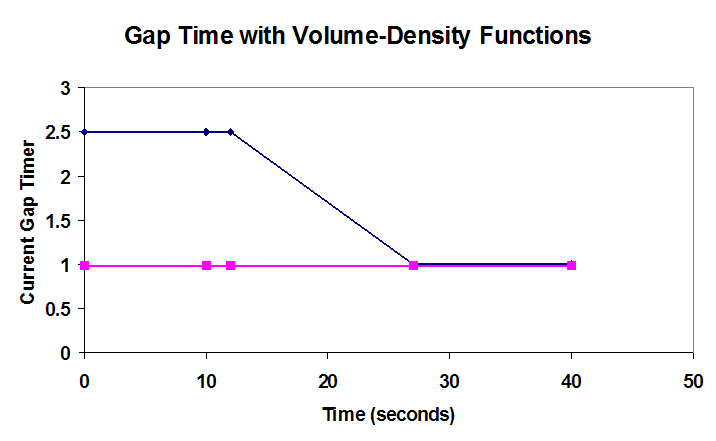Sub-problem 3a - Page 3 of 5Sub-problem 3a: Actuated Signal Detection and Signal
Timing
How do signal timing parameters affect the phase
length? As we have seen from the previous page, the green time for
individual phases with actuated control is variable. The time assigned to
each phase is governed by three parameters, the minimum green setting, the
maximum green setting, and the unit extension, also known as the passage
gap.
The time allotted to each phase is dependent on the demand
at the intersection and these signal timing parameters. In the case where
demand is light, the remaining time from each phase is reallocated to the
coordinated phase. Pedestrians also have an influence on phase lengths, but
for simplicity, within this first sub-problem we will ignore pedestrian
effects.
Two other factors may change the passage gap of a phase: TBR,
or time before reduction, and TTR, time to reduce the passage gap as the
phase extends past the initial value of unit extension
time. These factors help to catch the platoon as it moves along a corridor.
The TBR defines the amount of time the unit extension is held steady at its
higher initial value. After the TBR, the unit
extension is reduced, since at this point the queue that was waiting for the
light is moving at a steady speed across the detectors. The unit extension
value is reduced in a linear manner to the minimum gap time. The time that
passes from the TBR to when the unit extension is at the minimum gap time is
the TTR. Exhibit 5-X below
demonstrates this concept, with an inital passage gap of 2.5 s, a minimum
gap of 1.0s, a TBR of 12s, and a TBR of 15s.

On the next page, we will apply this information to our
example.
[
Back ] [ Continue ] with
Sub-problem 3a
